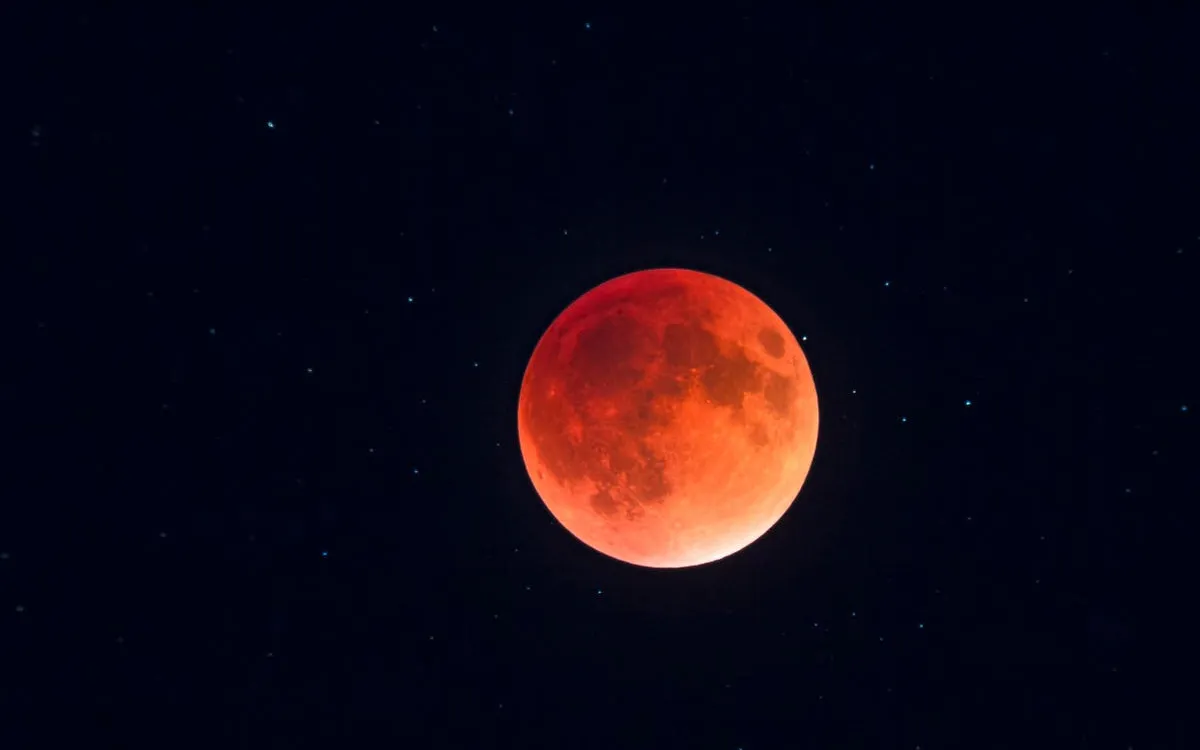
Are you prepared for one of the most extraordinary celestial events of the decade? Later this week, North America will witness the stunning Worm Moon as it becomes a breathtaking blood moon during a total lunar eclipse. This remarkable event marks the final full moon of winter, which will be enveloped by Earth’s shadow for a dramatic 65 minutes, showcasing its reddish hue. This total lunar eclipse is the first of its kind in two and a half years and will be the last chance to view one until 2029, making it a highlight of 2025. Here’s everything you need to know to experience the blood moon at its finest.
The Worm Moon is the traditional name given to the full moon in March, rooted in early Native American and European folklore. This name signifies the time of year when earthworms start to emerge from the thawing soil, heralding the end of winter and the arrival of spring. In 2025, the Worm Moon will reach its full phase at 2:56 a.m. EST on Friday, March 14, and will rise later that evening, casting a warm glow in the eastern sky. However, this year, the moon will be fully covered by Earth's shadow during the night, transforming into a captivating red hue for a brief period.
The total lunar eclipse will take place overnight on Thursday, March 13, and Friday, March 14, 2025. This global event will occur simultaneously for everyone on the night side of Earth. Here are the crucial times for viewers in North America:
Eastern Time (EST): Totality from 2:26 a.m. to 3:31 a.m. on Friday, March 14. Central Time (CST): Totality from 1:26 a.m. to 2:31 a.m. on Friday, March 14. Mountain Time (MST): Totality from 12:26 a.m. to 1:31 a.m. on Friday, March 14. Pacific Time (PST): Totality from 11:26 p.m. on Thursday, March 13, to 12:31 a.m. on Friday, March 14. Alaska Time (AKST): Totality from 10:26 p.m. to 11:31 p.m. on Thursday, March 13. Hawaii Time (HST): Totality from 8:26 p.m. to 9:31 p.m. on Thursday, March 13.Don’t miss the partial phases of the eclipse, which begin approximately an hour before totality and continue for around an hour after, as Earth's shadow slowly moves across the moon.
The best time to observe the blood moon is during totality when the full moon is completely immersed in Earth’s shadow, taking on a striking reddish and even coppery glow. This spectacular color is a result of sunlight filtering through Earth’s atmosphere and refracting onto the moon’s surface, with smoke or ash in the atmosphere enhancing the hues. You don’t need to travel to a specific location to see the eclipse—urban light pollution won’t significantly hinder your view. However, it may obscure the appearance of stars surrounding the moon, as the night sky darkens during totality.
To capture stunning photographs of the eclipse, many astrophotographers might head to dark sky destinations for wide-angle shots of the landscape, although close-ups can be taken from any location using telescopes. Since the event occurs overnight in March, it’s advisable to dress warmly, bring blankets, and have hot drinks on hand. Binoculars or a telescope can enhance your viewing experience, but your naked eyes will suffice for this celestial wonder.
Once the eclipse concludes, the Worm Moon will set in the west during dawn on Friday, March 14, before rising again in the evening just after sunset. Moonrise times will vary by location:
New York: Sunset at 7:01 p.m. EDT; Moonrise at 7:38 p.m. EDT. Los Angeles: Sunset at 6:59 p.m. PDT; Moonrise at 7:41 p.m. PDT. London: Sunset at 6:02 p.m. BST; Moonrise at 6:31 p.m. BST.While the total lunar eclipse will only be visible to those on the night side of Earth, the sight of the full moon rising on the eastern horizon will be a breathtaking spectacle enjoyed worldwide.
The Worm Moon, marking the final full moon of winter in the Northern Hemisphere, will be followed by the Pink Moon, which will occur on Saturday, April 12, heralding the first full moon of spring. Additionally, a partial solar eclipse will be visible on March 29, affecting regions in northeastern North America and across Europe.
Wishing you clear skies and wide eyes as you prepare to witness this incredible celestial phenomenon!